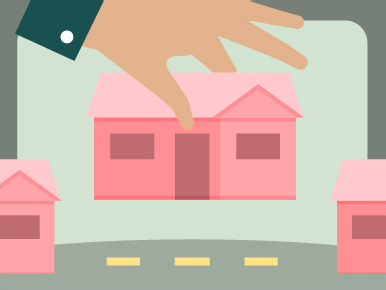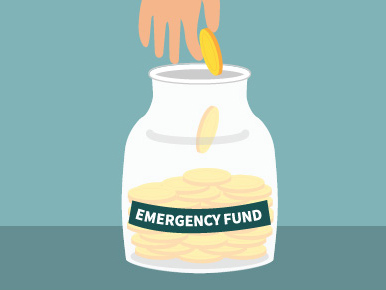Ever wondered why New Year’s resolutions don’t seem to stick? Take heart – research shows it has little to do with a lack of willpower, and more to do with a lack of plan.
To help you turn goal-setting into goal-achieving this year, here are some science-backed strategies to try. Not all of them will work for you (everyone’s different), but they might be worth a shot. And don’t forget the number-one rule: be patient. According to a 2010 study, it can take up to 254 days to form a new habit…
Positive reframing
A positive mindset can be pretty powerful when it comes to pursuing your goals. But don’t take our word for it: one Swedish study found that framing goals in a positive way can improve both performance and perseverance.
Researchers noticed that people were 12% more likely to succeed when the goal was to ‘approach’ something, rather than avoid it. It’s all about moving from a problem-oriented mentality (e.g., ‘I need to spend less money’) to a goal-oriented one (e.g., ‘I’d like to save $3,000 to book my next holiday overseas’).
Visualisation
It may also help to visualise your desired outcome. As social scientist Frank Niles explains here, “before we can believe in a goal, we first must have an idea of what it looks like.” And this is where visualisation comes in.
“When we visualise our desired outcome, we begin to ‘see’ the possibility of achieving it,” Niles continues. “Through visualisation, we catch a glimpse of what is, in the words of one writer, our ‘preferred future.’ When this happens, we are motivated and prepared to pursue our goal.”
It’s no coincidence that many athletes use visualisation techniques to enhance their performance.
Temptation bundling
According to experts, ‘temptation bundling’ is another great way to make a habit more attractive.
In short, you link an action that you want to do (and it’s instantly gratifying) with one that you need to do (or should do). For example, if your goal is to exercise more, you may plan to work out in the living room while watching your favourite Netflix show.
Researchers tested the effectiveness of this technique and found that coupling ‘wants’ and ‘shoulds’ can reduce the guilt associated with indulgences while also making the activities we should do more appealing. How can you incorporate this concept into your daily life?
Habit stacking
As the name suggests, this technique involves ‘stacking’ the new habit you’re trying to build onto your current habits, to create repeatable routines.
James Clear (author of Atomic Habits) distilled this concept into a simple formula: After/Before [CURRENT HABIT], I will [NEW HABIT]. For example, if your goal is to learn a new language, you can say: After eating dinner, I will practise Japanese for 15 minutes.
The reason why this approach works is that, when you’re using patterns and behaviours that are already built into your brain, it’s easier to create momentum. There’s no limit to how large stacks of small habits can be, and you can even combine temptation bundling with habit-stacking. For example: After [HABIT I NEED], I will [HABIT I WANT].
WOOP framework
Wish, Outcome, Obstacle, Plan – WOOP is a motivational strategy developed by German psychologist Gabriele Oettingen. In a nutshell, this tool uses visualisation to help you clarify what you need to do to achieve your goals.
First, you need to imagine what activity or goal you wish to accomplish (e.g., save $2,000). Then, you’ll imagine the outcome (e.g., buy a flight ticket to Bali). It’s important that both the wish and the outcome are within reach. Following that, you’ll envision the obstacles you will face – anything that may prevent you from reaching your goal. Lastly, you’ll focus on a plan to overcome those obstacles: If [OBSTACLE], then I will [ACTION TO OVERCOME OBSTACLE].
As Oettingen explains in her book Rethinking Positive Thinking: Inside the New Science of Motivation, “The solution isn’t to do away with dreaming and positive thinking. Rather, it’s making the most of our fantasies by brushing them up against the very thing most of us are taught to ignore or diminish: the obstacles that stand in our way.”
Make goals SMART (and enjoyable)
What if the reason why your goals feel so hard is because they’re too vague? According to the famous SMART technique, to be successful goals need to be:
-
Specific – if a goal is specific, it provides structure and focus.
-
Measurable – how will you check your progress?
-
Achievable – that doesn’t mean you can’t dream big. Maybe you just need to break down your big goal into smaller milestones.
-
Relevant – your goal needs to be relevant to you, not just things that you think you ‘should’ do or others are doing.
-
Time-bound – make sure you’re mindful of the time you’ll need to achieve it.
And of course, a goal needs to be enjoyable. According to research, people are more likely to build a habit if they enjoy the process along the way. Otherwise, goals become chores to handle and tasks to complete, as opposed to much-welcome challenges.
Can we help you achieve any of your resolutions?
If you’re looking for inspiration, check out our article Four New Year's resolutions that can reduce your insurance premiums. And if one of your goals is to protect your most important assets, our handy quote compare tool will give you quotes in minutes from some of New Zealand’s top insurers.
Sources:
-
CNN.com – The science of how to stick to New Year’s resolutions and truly change your habits
-
CNN.com - Science-Based Techniques To Keep Your New Year’s Resolutions
-
Journals.plos.org - A large-scale experiment on New Year’s resolutions: Approach-oriented goals are more successful than avoidance-oriented goals
Disclaimer: Please note that the content provided in this article is intended as an overview and as general information only. While care is taken to ensure accuracy and reliability, the information provided is subject to continuous change and may not reflect current developments or address your situation. Before making any decisions based on the information provided in this article, please use your discretion and seek independent guidance.










